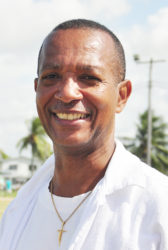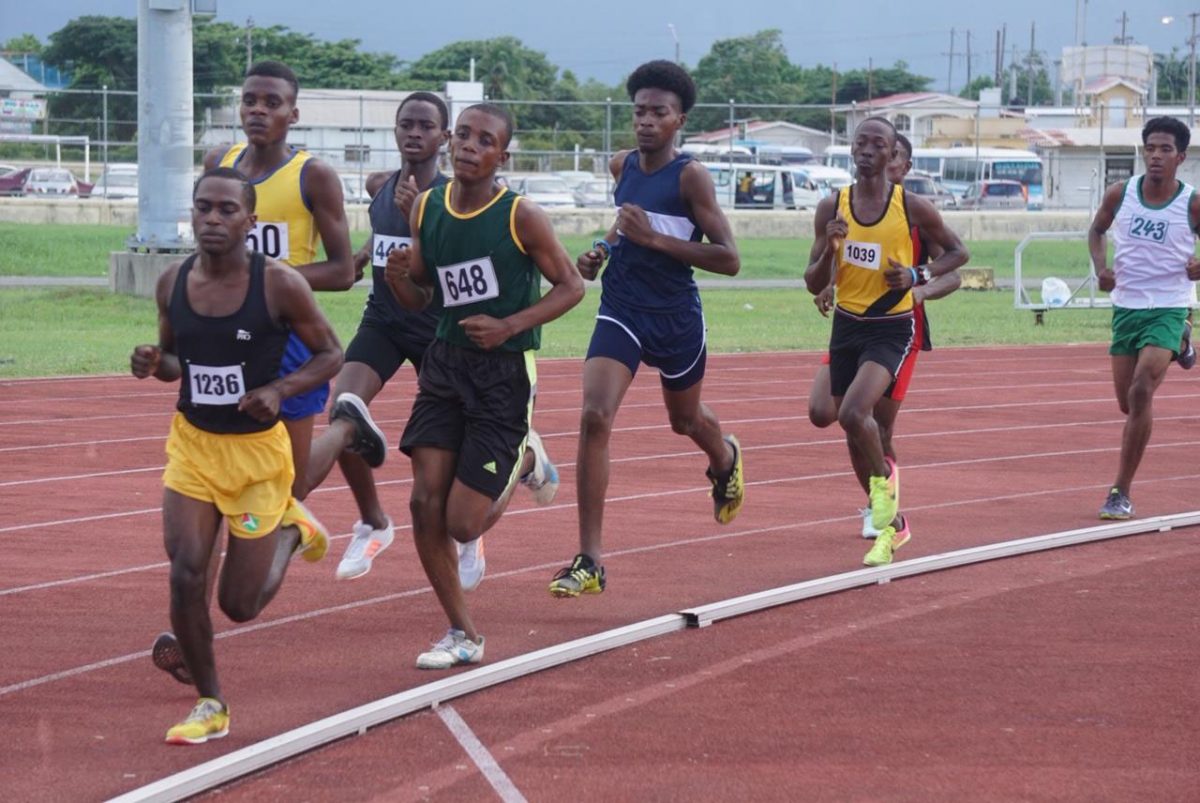Aubrey Hutson, President of the Athletic Association of Guyana (AAG), said yesterday that the association will be fully compliant with the strict competition guidelines recently published by Track and Field’s governing body, World Athletics.
The health and safety guidelines was published to assist competition organisers to minimise the risk of spreading the coronavirus when staging in-stadium outdoor events during the COVID-19 pandemic.
The guidelines also offer guidance for a number of stakeholders, including professional athletes, support staff, technical officials, the stadium workforce, volunteers, medical staff and the media.

Although it does not include guidelines regarding spectators, the World Health Organization (WHO) has produced a document and risk-assessment tools for mass gatherings.
Said Hutson yesterday “Our plan is to comply with the guidelines set out by World Athletics and our local health ministry. The AAG will source the necessary protective gears for our officials and observe all other protocols in preparation for local competition. We must do this to protect our athletes and officials.”
Hutson recently told this publication that the AAG is preparing to restart its season sometime next month.
The guidelines, drafted by World Athletics’ Health and Science Department, also addresses the post-peak period, as described by the (WHO) and are based on scientific and medical knowledge of the virus responsible for COVID-19.
Competition organisers are advised to undertake a four-point risk assessment for all accredited attendants. If an individual scores two or higher, it is recommended that they should undergo a medical clearance protocol before the event.
Other recommendations include:
Pre-event
Welcome desks organised by local organising committees (LOC) at airports or railway stations should provide each arrival with a welcome bag that includes single-use masks (three per day, minimum), bottles of hand sanitizer, disinfectant wipes, and a leaflet to explain the health and safety protocols for that particular event.
When being transported from an airport or railway station to competition hotels, all passengers and drivers should wear a mask and be seated at an appropriate distance away from one another. One-way flows should also be implemented to avoid mixing of people.
LOCs are also strongly recommended to organise and use a medical encounter registry, recorded on an electronic system, to facilitate identification and further contact of potentially infected individuals.
At the stadium
Spectators and accredited personnel should have two completely separate entrances and the flows should not cross. Accredited personnel should only be granted access to the competition venue if wearing a face mask and with their personal hand sanitizer.
Face masks should be worn by everyone in the stadium, with the exception of athletes when warming up or competing in their event.
Warm-up zones should be large open-air areas within a short walking distance of the competition stadium, and access to it should be strictly controlled.
Athletes should be invited to enter the warm-up area following a specific timetable. All accredited personnel should wear a mask and wash their hands before entering warm-up zones or dedicated toilets.
Masks should also be worn in call rooms, which should be arranged in an outdoor location. It is also mandatory to disinfect chairs between each use.
In competition
The number of people on the field of play should be kept to a minimum, and officials who will be coming into close contact with athletes should wear protective glasses or a plastic face shield, in addition to their mask. Once athletes have crossed the finish line, they should try to keep their distance from the public and officials, where possible, until they collect their belongings from the call room.
Specific guidelines for individual disciplines:
– starting blocks should be cleaned between each race
– chlorine should be added to the water jump for the steeplechase
– relay batons should be cleaned between each use, and relay teams should be discouraged from gathering or hugging after a race
– the use of hand sanitizer should be recommended before each attempt in vertical jumps
– officials should clean the landing mat between each jump, using a mop and virucidal solution or use a thin layer of recyclable plastic or tissue that can be placed on the jumping mat-
sand in jumping pits should be mixed with a solution that contains biodegradable and non-skin-aggressive virucide agent
– officials who handle throwing implements should clean their hands or use disposable gloves after each handling
– in combined events, the room used by athletes to recover between disciplines should be open-air, if possible. Coaches should be encouraged to interact with their athletes using electronic devices.
After competition
Media mixed zones should also be outside, if possible, and the number of people in the area should be kept to a minimum. A plexiglass screen should be placed between the athletes and the media, and cleaned after each interview, and separate interview boxes should be used if there are multiple positions. Without screens, a safety dead zone of three metres should be adopted when journalists interview athletes, and masks should be used by both parties.
To keep the number of people on the field of play to a minimum, live award ceremonies are not recommended, but alternative digital solutions are encouraged.
Once the competition has concluded, a thorough disinfection procedure should be undertaken.
The full guidelines can be downloaded on World Athletics’ website. According to the site, the document is dynamic and will be updated as and when more evidence and scientific-based knowledge becomes available.





